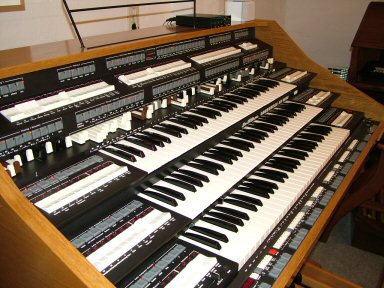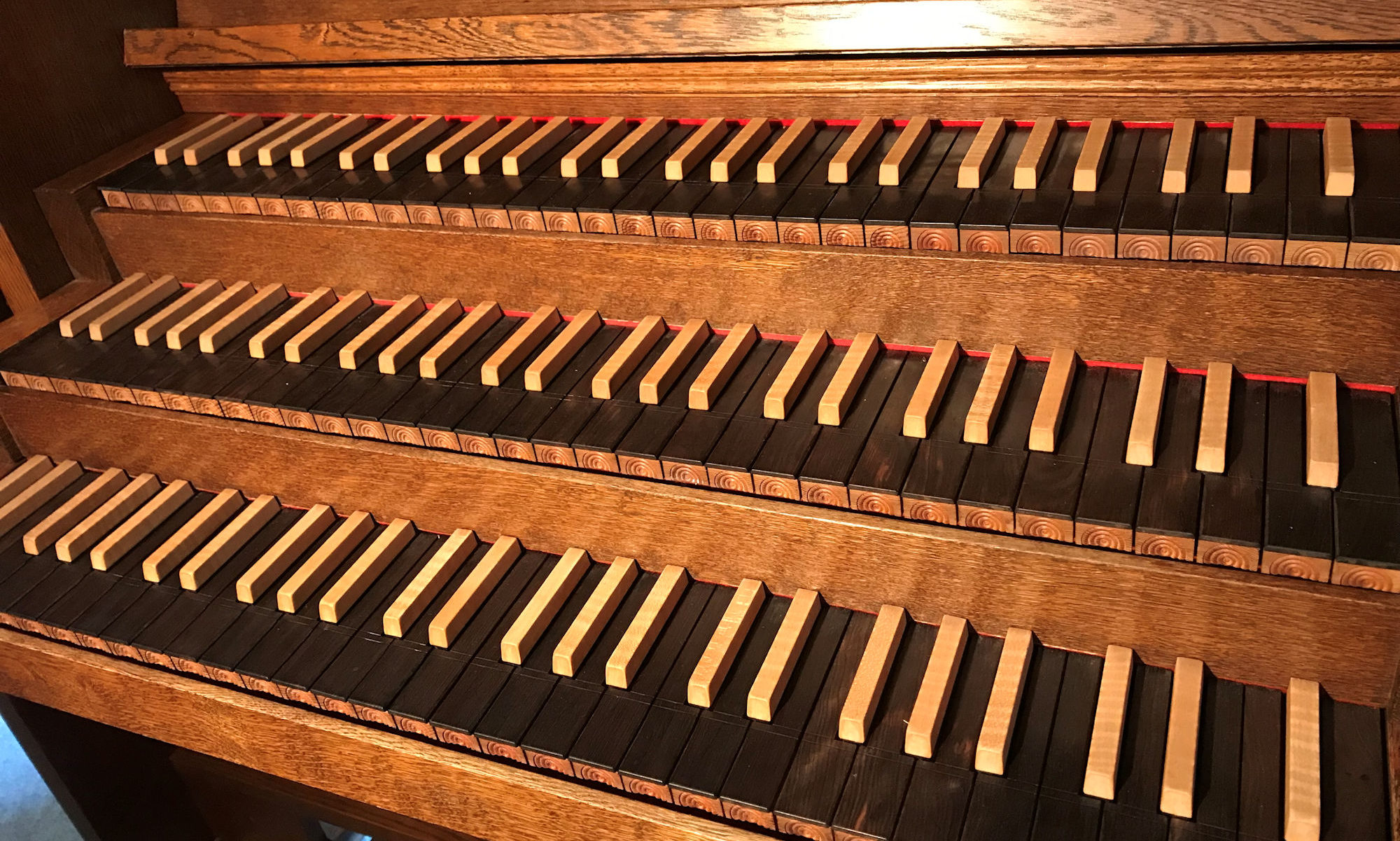
Big sister of the Böhm Star Sound. Principally it holds the same technology inside, but it uses much more material. This organ looks spectacular, I would say: She is THE analog organ of these times with the most knobs and drawbars. I didn’t have the time to count them all 🙂
There are actually 8 separate organs inside: 4 “organ computers” for the manuals and pedal board. They are fed by 2 independent TOS, which can be individually detuned. 3 Solo Computers enable polyphonic attack and percussion sounds for two manuals and the pedal. Finally a Multi Contour Computer which can be assigned to any of the manuals. Not to mention the monophonic synthesizer and accompaniment sound generation, its bass synthesizer is playable by the pedals as well.
Repairments
- Keyboard contacts cleaned with a glass fiber pencil.
- Two transistors were defect at the memory system
- An OpAmp defect in the Pedal Solo Computer, now the 8′ sounds correct again
- The CPU of the DD crashed always when it was cold, replaced.
- The Sin Percussion distorted, I decreased the feedback resistor of the corresponding OpAmp. I don’t know the reason, why the original resistor value is wrong, but it works.
- Power supply needed new rectifier and caps, exchanged some fuses with higher values.
Improvements
The spring reverb was already replaced by an Alesis Microverb when I got this organ. Because I only use a single reverb program and wanted to control the reverb intensity by the original drawbar, I just integrated it completely into the chassis.
My first sound impression was: well, this organ sounds very “rectangular”. Well a lot of rectangular waves, the basic sound was more like clarinets Orchestra. I know that the saw wave organ Böhm CnT uses chips adding internally 5 octaves of rectangular waves to obtain a good sounding saw wave. An organ with waves from 16′ to 1/8′ (8 octaves) per key should have at least the same sound quality. There are two reasons, why not:
The Solo Computer has only 3 octaves, witch results in simple stair step saw-tooth wave. The second reason is sub-optimal octave mixing. The individual amplitude differences of the generators (OC) and differentiated rectangle output result deviations to a correct stair-step wave. This can be improved by replacing the mixing resistors. I tried this in the following way: each of this resistor is connected and bridged by a potentiometer. By changing these potentiometer and carefully listening, you will get the correct values of the new resistors and you can replace them. A time consuming method, but worth the effort.
The leftmost 12 drawbars were intended for the older Böhmat and were not in use. I connected them to the Sinus drawbars of Manual 2, the Preset1 switch now activates this second drawbar set, like a B3…
12 memorized switches are unused and it has MIDI outputs. So I connected a Casio VZ-10m to it and send the 2 outputs to an additional filter board which is controlled by the 12 switches. The synthesizer can be played by manuals and pedal board and is integrated into the internal phasers and reverb.
